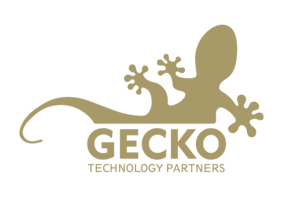Since the launch of Zoom interoperability in January to more features still continuing to land in mid-December, there have been many updates to the Google Meet experience in 2023. Whether you’re joining from a phone, web browser or dedicated meeting room hardware, or whether you’re attending, hosting or presenting, there have been improvements to every facet of the meeting experience.
As the year draws to a close, we’ve rounded up some of the highlights from the long list of 2023 updates:
Features for participants

For meeting participants, January marked the introduction of in-meeting reactions. These emoji reactions are a fun, light-hearted way for you to express yourself authentically and give instant feedback during a Google Meet call without disrupting its flow.
In April, Google released a new setting that allows you to enable 1080p resolution for Google Meet calls between two participants and during livestreams. Later, in October, the same enhancement was introduced for group meetings.
Participants also gained more control over their meeting view with the ability to hide specific video feeds. This is useful for concentrating on a particular presenter or eliminating distracting video tiles without impacting what other participants can see.
Building on the launch of picture-in-picture (PiP) mode in 2022, participants can now enjoy an enhanced PiP experience, making it even easier to control calls away from the Google Meet tab. With these enhancements, you can raise your hand, use in-meeting chat, toggle captions on and off, and more – all directly from the PiP window.
In November, Google Meet on-the-go mode debuted on mobile, providing a new audio-only experience that detects movement and adjusts the meeting interface to help you focus on critical meeting details whilst conserving bandwidth.
Finally, with hand-raise gesture detection, Google Meet can now recognise when you physically raise your hand in a meeting, triggering the corresponding digital hand-raise indicator.
Features for participants in meeting rooms

For meeting room participants, the year kicked off with the introduction of native, bi-directonal Zoom interoperability. This allows you to join Zoom meetings on Google Meet Hardware and join Google Meet calls on Zoom Rooms. It transforms the way you can talk to customers, partners, suppliers and colleagues across platforms by removing barriers. Zoom interop was improved further in August with the switch to Gallery view to make better use of screen real estate.
June brought a notable enhancement for meeting room participants with Companion Mode check-in, allowing those joining a Google Meet call from a meeting room to be recognised by their own name, instead of the name of the room, boosting individual representation. Support for whiteboard cameras on Google Meet Hardware arrived in June too, starting with Logitech Scribe – and other whiteboard cameras to follow.
Additionally, in-room booking came to Google Meet Hardware in October, making it faster and more convenient to secure a meeting space for those quick, impromptu huddles.
Features for hosts and presenters

In March, external labels came to Google Meet. These yellow icons pop up when someone from outside the host’s domain joins a call, making it easier to identify who’s who.
Viewer mode rolled out in June, offering hosts a valuable tool to better control the flow of large meetings where active participation isn’t always necessary. Viewers are meeting participants who cannot share their audio and video into a meeting but who can still use Q&As, polls, and, most recently, emoji reactions.
September saw the release of tile pairing, a useful feature that allows you to pair your video tile with another participant’s. This is especially beneficial for calls with interpreters or to pair co-presenters.

For presenters, a series of improvements were launched this year to expand on the 2022 update that brought Google Slides controls directly into Google Meet. This includes co-presenting, viewing speaker notes (also available for co-hosts) and quick content sharing with all attendees. Collectively, these updates contribute to ensuring presentations run smoothly and efficiently for everyone.
New Google Meet Hardware

In 2023, we witnessed many significant changes to the Google Meet Hardware portfolio.
Firstly, Google Meet became available on even more form factors. Poly was the first to launch its Android-based appliance mode in March, enabling the Poly Studio X family of video bars to run Google Meet natively without a Google Meet Compute System. The Android-based appliance mode for the Logitech Rally Bar and Logitech Rally Bar Mini will follow in 2024.
Recently, Google outlined the roadmap for 2024 as Jamboard approaches its AUE. Whilst the Jamboard device and app are being phased out, expect an exciting future for digital whiteboarding on the Google Meet Series One Board 65 and Desk 27. These devices, currently using the Jamboard experience to power their whiteboarding capabilities, are set to welcome three dynamic third-party whiteboarding apps which will be integrated into the devices in 2024: FigJam, Lucidspark and Miro. They offer features that were never present on Jamboard, including infinite canvases, voting and use case templates.
2024 & what’s next
We look forward to seeing what 2024 will bring. If you want to discuss any of the updates contained here, or get a preview of the 2024 roadmap, get in touch at info@GeckoTech.cloud.
Looking for the Google Workspace updates that arrived in 2023? Read our round-up here.
